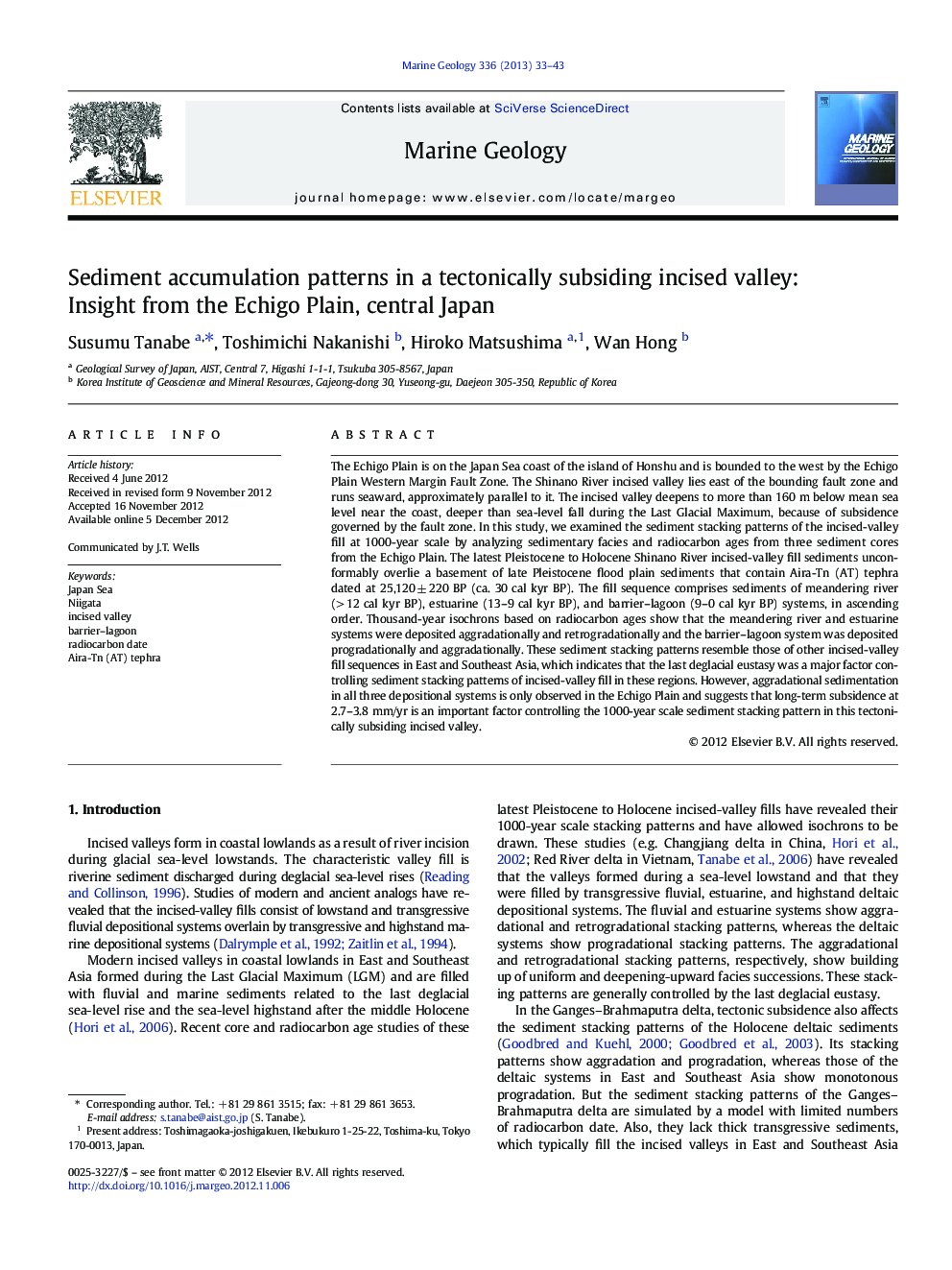| کد مقاله | کد نشریه | سال انتشار | مقاله انگلیسی | نسخه تمام متن |
|---|---|---|---|---|
| 4718435 | 1639116 | 2013 | 11 صفحه PDF | دانلود رایگان |
The Echigo Plain is on the Japan Sea coast of the island of Honshu and is bounded to the west by the Echigo Plain Western Margin Fault Zone. The Shinano River incised valley lies east of the bounding fault zone and runs seaward, approximately parallel to it. The incised valley deepens to more than 160 m below mean sea level near the coast, deeper than sea-level fall during the Last Glacial Maximum, because of subsidence governed by the fault zone. In this study, we examined the sediment stacking patterns of the incised-valley fill at 1000-year scale by analyzing sedimentary facies and radiocarbon ages from three sediment cores from the Echigo Plain. The latest Pleistocene to Holocene Shinano River incised-valley fill sediments unconformably overlie a basement of late Pleistocene flood plain sediments that contain Aira-Tn (AT) tephra dated at 25,120 ± 220 BP (ca. 30 cal kyr BP). The fill sequence comprises sediments of meandering river (> 12 cal kyr BP), estuarine (13–9 cal kyr BP), and barrier–lagoon (9–0 cal kyr BP) systems, in ascending order. Thousand-year isochrons based on radiocarbon ages show that the meandering river and estuarine systems were deposited aggradationally and retrogradationally and the barrier–lagoon system was deposited progradationally and aggradationally. These sediment stacking patterns resemble those of other incised-valley fill sequences in East and Southeast Asia, which indicates that the last deglacial eustasy was a major factor controlling sediment stacking patterns of incised-valley fill in these regions. However, aggradational sedimentation in all three depositional systems is only observed in the Echigo Plain and suggests that long-term subsidence at 2.7–3.8 mm/yr is an important factor controlling the 1000-year scale sediment stacking pattern in this tectonically subsiding incised valley.
► One of the thickest incised-valley fills in the modern world
► 1000-yr scale sediment stacking patterns are reconstructed using real isochrons.
► Eustacy is a major control defining the sediment stacking patterns.
► We firstly proved that aggradation is a typical feature in a subsiding region.
► Due to the aggradation, heterogeneously thick sedimentary facies are formed.
Journal: Marine Geology - Volume 336, 1 February 2013, Pages 33–43
